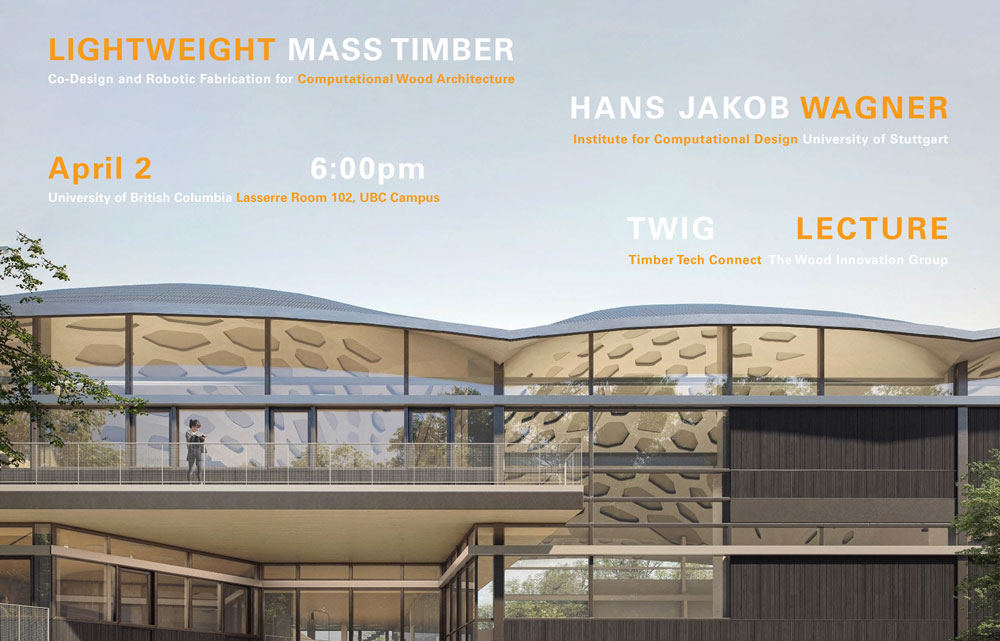The integration of computational design, digital engineering, and robotic fabrication methods has revolutionized the field of architecture, particularly in the realm of wood construction. By leveraging these technologies, architects and engineers can collaborate on the creation of innovative building systems that maximize performance while minimizing material usage. This has significant implications for sustainability and efficiency in construction.
This talk presents recent developments at the University of Stuttgart for the co-design of a point-supported multi-storey wood slab system. It represents a departure from conventional mass-timber slabs by enabling long spans of up to 12 meters without relying on regular grids. This flexibility opens up new possibilities for architectural design, allowing for more creative and varied spatial configurations.
